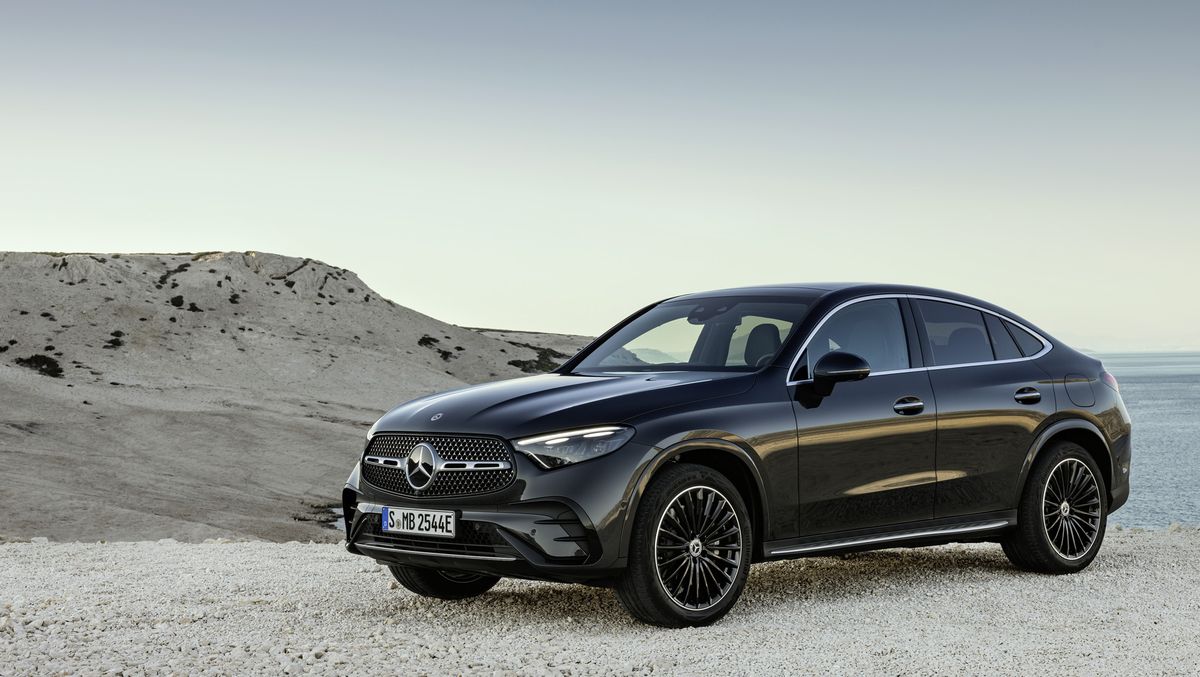When shopping for an SUV, most buyers tend to focus on the features that are easiest to see and measure—things like horsepower, fuel economy, infotainment systems, cargo capacity, and third-row seating. However, one of the most essential and safety-critical factors often gets overlooked: driver visibility.
Visibility might not be as exciting as 0-to-60 times or panoramic sunroofs, but it profoundly impacts every aspect of the driving experience. Whether you’re navigating a busy city intersection, merging onto a highway, or backing out of a grocery store parking spot, your ability to see clearly out of your vehicle in every direction is what keeps you, your passengers, and everyone around you safe.
In recent years, as SUV designs have become more stylish and aggressive, featuring sloping rooflines, thicker pillars, and rising beltlines, driver visibility has frequently taken a backseat to aesthetics.
For many drivers, poor visibility becomes a daily source of stress and anxiety behind the wheel. Modern SUVs are larger than ever, and with that size often comes a more confined driver’s perspective, especially in models that emphasize design over practicality.
Thick A-, B-, and C-pillars may add to a vehicle’s structural integrity and visual appeal, but they also create significant blind spots.
At the same time, sleek rooflines and small rear windows can make reversing and parallel parking much more difficult. Even with the proliferation of driver-assistance technologies like rearview cameras, parking sensors, and blind-spot monitoring, there’s no true replacement for good old-fashioned, clear, uninterrupted sightlines.
Those tech features are helpful, but they should supplement a well-designed cabin layout, not compensate for its shortcomings.
This article dives into ten SUVs—five that are standouts for their outstanding visibility, and five that, unfortunately, leave drivers feeling boxed in or “driving blind.” We’ll explore what makes certain models particularly easy to see out of, from thin pillars and expansive glass areas to high seating positions and clever mirror placement.
On the flip side, we’ll look at some popular SUVs that are guilty of sacrificing practicality for styling, resulting in narrow rear windows, claustrophobic cabins, and excessive blind spots.
Whether you’re a daily commuter, a frequent road-tripper, or someone shopping for a safe family vehicle, visibility should play a major role in your decision-making process.
Because at the end of the day, if you can’t see what’s around you, everything else—power, comfort, tech—comes second to your safety and peace of mind.
Also Read: 10 Cars With the Smartest Hidden Storage Features for Everyday Convenience
5 SUVs With Great Visibility
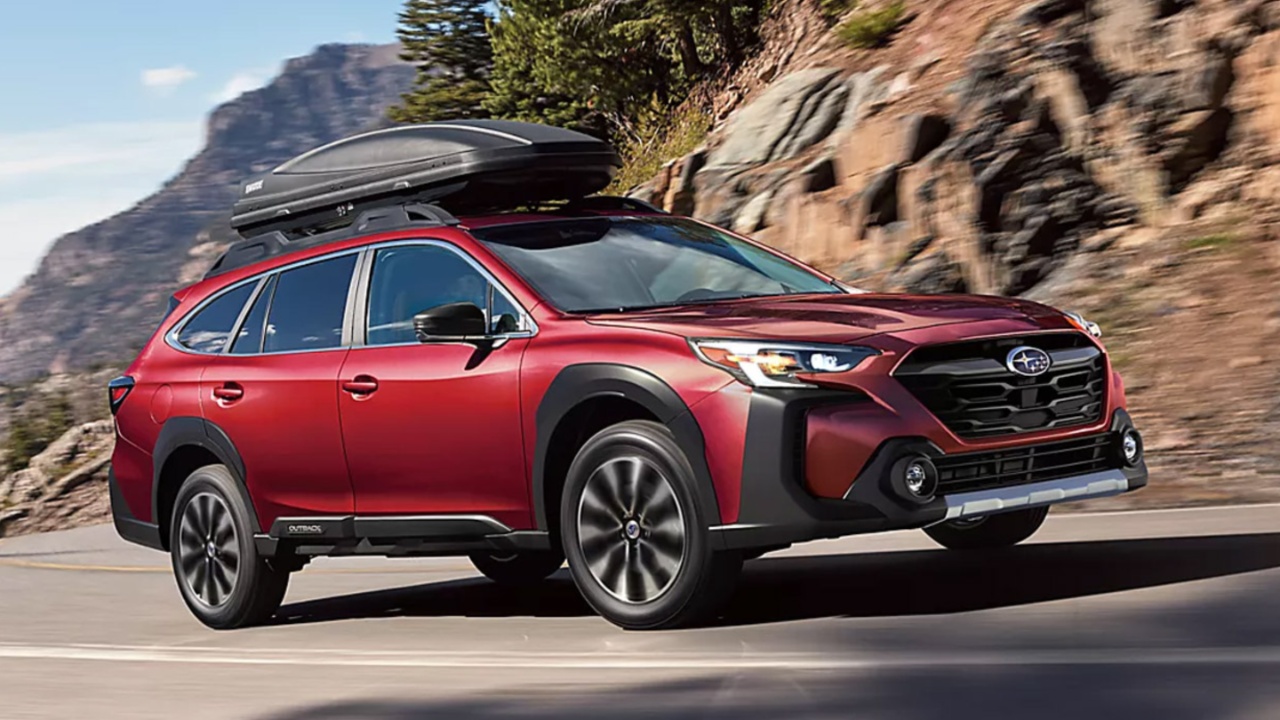
1. Subaru Outback
The Subaru Outback has built a reputation for providing exceptional visibility to drivers. As a crossover SUV, it combines the functionality of an SUV with the feel of a wagon, which results in a much more open, airy cabin.
One of its standout features is the large windshield, which is not only wide but also nearly unobstructed by the A-pillars.
This provides the driver with a better view of the road ahead, reducing blind spots when approaching intersections or making turns. The minimal thickness of the A-pillars helps avoid the obstruction of view, making it easier to spot pedestrians, cyclists, and other vehicles in busy environments.
The side windows of the Outback are also large, allowing drivers to have a more expansive view of their surroundings. These larger windows help reduce the blind spots, which can be a challenge in many other SUVs.
Additionally, the slim side mirrors on the Outback are well-positioned to help improve side visibility without blocking the driver’s line of sight. With these design features, the Outback provides one of the most open and intuitive views in its class, making it perfect for those who prioritize seeing clearly in urban or rural driving conditions.
Another key aspect that enhances the Outback’s visibility is its rear window. The rearview is clear and wide, which makes parking and reversing a more straightforward task.
Coupled with the standard rearview camera, drivers can confidently back out of tight spaces or driveways. This makes the Subaru Outback one of the best choices for drivers who frequently need to park in crowded lots or navigate narrow streets.
When driving the Outback, you’re able to see more than you might expect, which can reduce stress and improve your experience.
Whether you’re navigating city traffic or driving on winding mountain roads, the Subaru Outback offers unparalleled visibility, and its advanced safety features, like blind-spot monitoring, help further enhance the experience.
The combination of clear sightlines, a high driving position, and a wide view of the road makes this SUV an excellent choice for anyone looking for confidence behind the wheel.
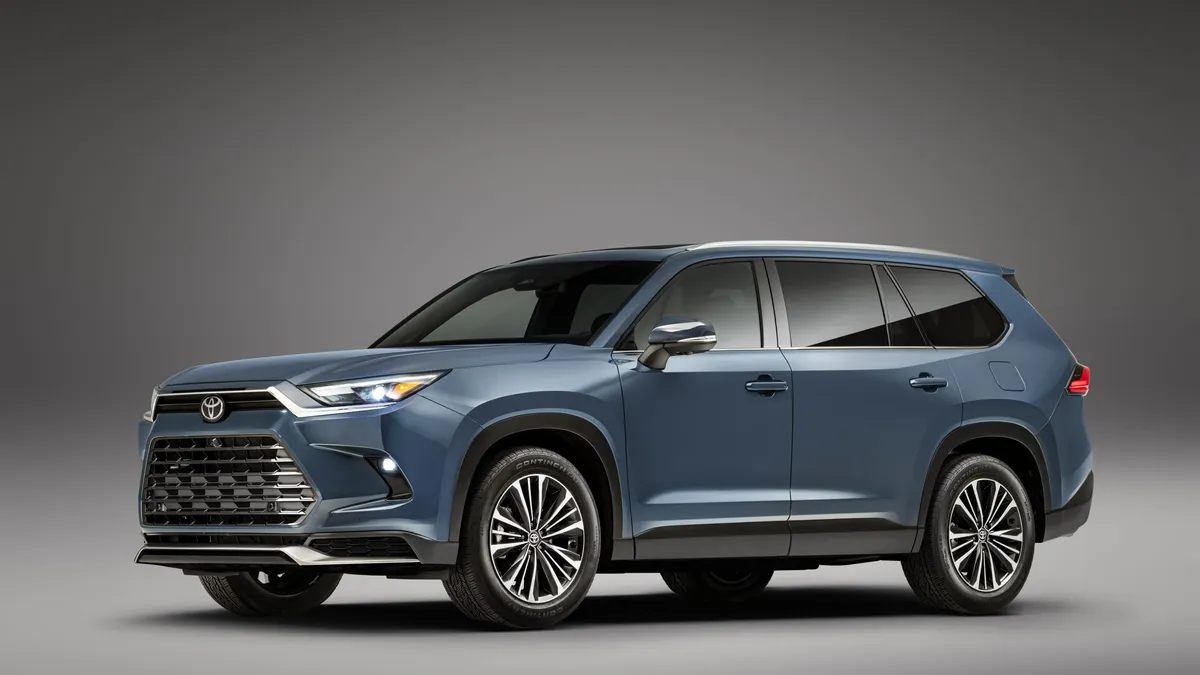
2. Toyota Highlander
The Toyota Highlander is a midsize SUV that stands out for offering a clear, commanding view of the road. Its high seating position and large windows make it easy for drivers to spot pedestrians, cyclists, and other vehicles from a distance.
The A-pillars are designed to be thin, which reduces their impact on sightlines when making turns or changing lanes. This feature significantly enhances the driver’s field of view and reduces the blind spots, which are often found in other SUVs with bulkier pillars.
The design choices in the Highlander contribute to a more open, unobstructed driving experience, making it one of the top picks for those who value clear sightlines. The SUV’s side windows are notably large, allowing drivers to see more of the surrounding environment, which is particularly important when driving in busy traffic.
The side mirrors are positioned perfectly, offering drivers a full view of the lanes around them, further minimizing blind spots. These windows and mirrors allow the driver to safely maneuver through traffic and parking lots, giving them greater confidence on the road.
The rear visibility in the Highlander is also impressive. The SUV is equipped with a wide rear window, making it easier to reverse or park in tight spaces. The rearview camera comes standard in the Highlander, and with its sharp clarity, it gives drivers a better view of what’s behind them, making parking or backing out of driveways less stressful.
As an added benefit, the Highlander’s available panoramic sunroof in higher trims provides a more open feel to the cabin and increases the visibility, especially when driving in expansive areas. For those who need a spacious, family-friendly SUV that provides excellent visibility, the Toyota Highlander is a great choice.
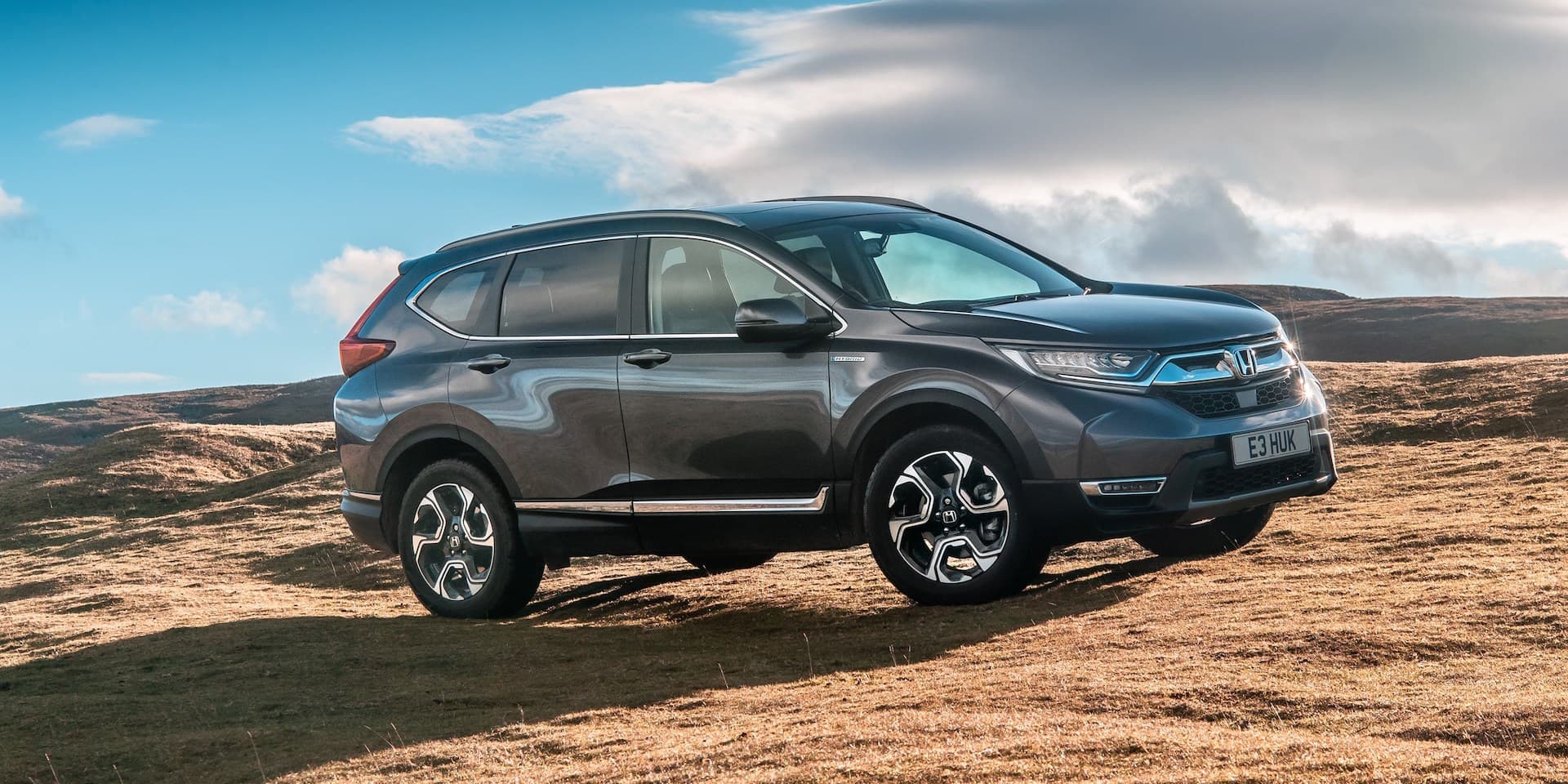
3. Honda CR-V
The Honda CR-V has long been one of the most popular compact crossovers, and much of its appeal lies in its exceptional visibility. The high seating position offers drivers an elevated perspective, making it easy to see the road ahead and anticipate turns, pedestrians, and other vehicles.
The front windshield is large and nearly unobstructed, offering excellent clarity. Unlike many other SUVs, the A-pillars of the CR-V are relatively narrow, further increasing the driver’s line of sight and reducing the amount of obstruction when turning or changing lanes. This design allows the CR-V to maintain a clear view of the road, even in tight spaces.
The CR-V’s side windows are also designed with visibility in mind. They are wide and offer a full view of the vehicle’s surroundings, which helps reduce blind spots.
The side mirrors are large enough to provide an ample view of the surrounding lanes, and the driver’s seat height ensures that the view is unobstructed when looking out of the side windows. These features make the CR-V one of the best compact SUVs in terms of all-around visibility.
When it comes to the rearview, the CR-V offers a wide, open view out the back thanks to its relatively large rear window. Reversing is made easier with the standard rearview camera, and the SUV’s compact size also aids in maneuverability.
The CR-V is a great option for those who prioritize ease of parking and reversing, in addition to general visibility. With the added benefits of advanced safety features, such as lane-keeping assist and collision mitigation braking, the CR-V ensures that visibility works hand-in-hand with driver assistance technologies to make every driving experience as safe as possible.

4. Jeep Grand Cherokee
The Jeep Grand Cherokee is a midsize SUV that delivers a commanding view of the road. It combines rugged performance with ample visibility, making it a favorite among those who enjoy both urban driving and off-roading adventures.
One of the primary features that enhances visibility in the Grand Cherokee is its high seating position, which gives the driver a better perspective of the road. The SUV’s large windshield is unobstructed by thick pillars, allowing for better forward visibility, which is crucial when driving off-road or through challenging weather conditions.
The side windows of the Grand Cherokee are designed to provide an expansive view, which helps reduce blind spots. The side mirrors are appropriately sized and placed to ensure that the driver can easily monitor traffic without the need for constant head-turning.
This feature is particularly useful when merging into traffic or when navigating through tight spaces on highways and city streets. The rear visibility in the Grand Cherokee is also exceptional. The wide rear window and rearview camera make reversing a breeze, even in tight parking spots or off-road environments.
This SUV is designed to offer a clear view of what’s behind, which is especially important when towing or navigating rough terrain. Whether you’re driving through urban areas or exploring the great outdoors, the Jeep Grand Cherokee provides the visibility needed for a safe, confident driving experience.
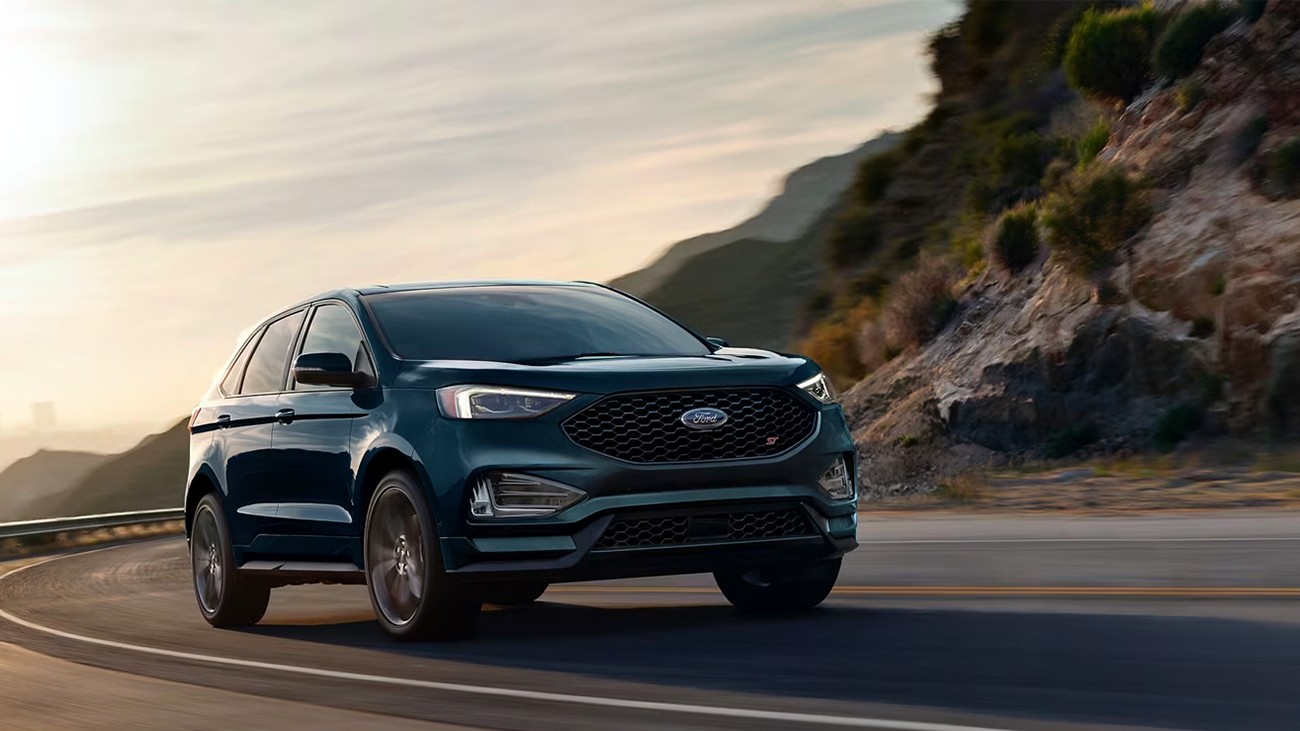
5. Ford Edge
The Ford Edge is a midsize crossover that excels in providing excellent visibility for its driver. With a spacious cabin and high driving position, the Edge offers a clear view of the road from the front, which makes it easier to navigate through busy streets or merge onto highways.
The large front windshield and slim A-pillars ensure minimal obstruction when driving, which helps improve visibility. The design of the Edge prioritizes clear sightlines, which is essential when changing lanes or approaching intersections.
The side windows in the Edge are large and offer great visibility, making it easier for drivers to monitor their surroundings. The side mirrors are placed in an optimal position, giving drivers the ability to see traffic in neighboring lanes without having to turn their head significantly. This design reduces blind spots and provides a smoother driving experience, particularly in tight traffic conditions.
The rear window of the Ford Edge is also large, allowing drivers to see behind them more clearly. The rearview camera comes standard, and higher trims offer a 180-degree camera system, which enhances the driver’s ability to see what’s behind when reversing or parking.
The large windows, good positioning of the mirrors, and advanced camera systems make the Ford Edge a top contender for anyone seeking an SUV that delivers great visibility in all driving situations.
5 SUVs That Are Like Driving Blind
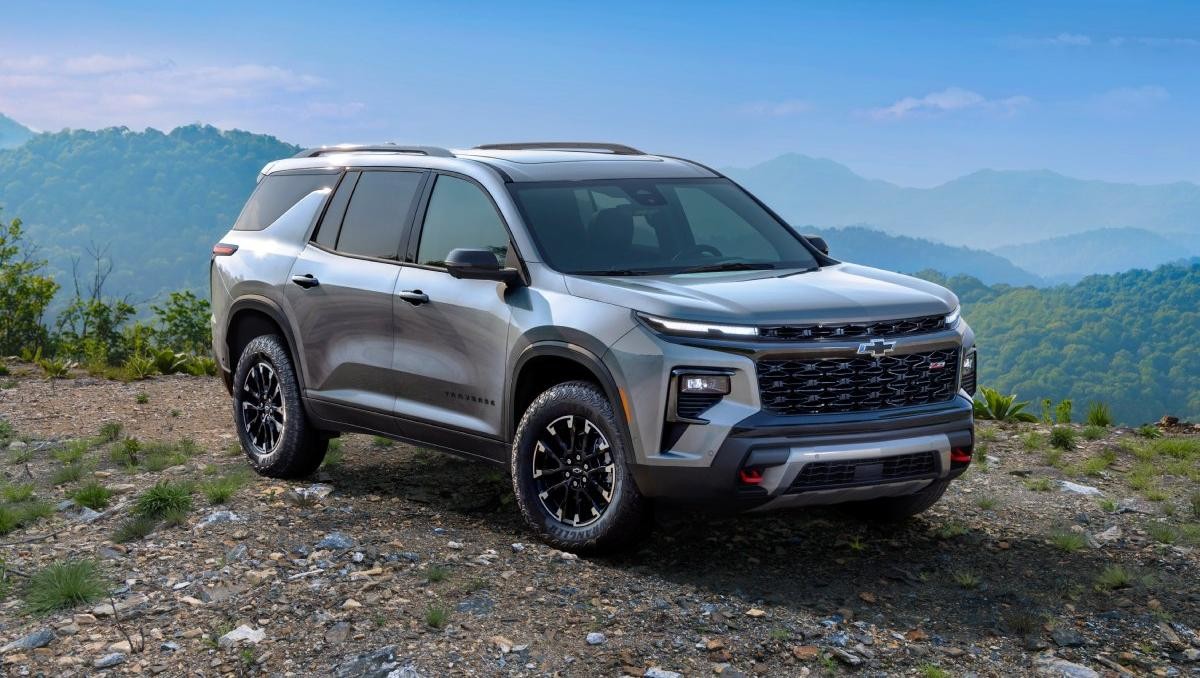
1. Chevrolet Traverse
The Chevrolet Traverse is a large, family-oriented SUV that offers ample interior space and a smooth ride. However, it comes with significant visibility challenges that can make the driving experience less enjoyable and more stressful.
The primary issue with visibility in the Traverse is the thick A-pillars that obstruct the driver’s view, especially when turning at intersections or changing lanes.
These bulky pillars block important sightlines, making it difficult to see pedestrians, cyclists, or smaller vehicles that may be in the blind spot. This can be especially dangerous when navigating through busy streets or parking lots where quick decision-making is required.
While the Traverse is a spacious SUV that can comfortably accommodate passengers, the design compromises visibility, which may make it harder for drivers to feel fully aware of their surroundings at all times.
The side windows of the Traverse also contribute to its visibility problems. While large, these windows are situated in a way that creates substantial blind spots, especially on the driver’s side.
This can make it challenging to monitor nearby traffic or to spot vehicles in the adjacent lanes when changing lanes on highways or in urban traffic.
In addition, the side mirrors are relatively large but are not positioned in an optimal way to offer a clear view of surrounding vehicles. These design issues mean that even with the use of advanced safety features like blind-spot monitoring, the Traverse still feels more confined than it should be when it comes to the view around you.
The restricted visibility makes it harder to maneuver in tight spaces, and driving the Traverse in crowded environments can feel like you’re driving a much larger vehicle with more restricted sightlines than it is.
Rear visibility in the Traverse is another area of concern. The rear window, while wide, is still relatively small compared to many other vehicles in its class, and combined with the wide rear pillars, it limits the driver’s view when reversing or parking.
This makes it more difficult to navigate parking lots, and even with the inclusion of a rearview camera, the view behind the vehicle remains limited.
The Traverse’s large size and restricted rear sightlines can create an overwhelming feeling when trying to back out of tight spaces or parking lots, and this could pose a serious inconvenience for drivers who need to park in confined areas on a regular basis.
Whether you’re backing out of a driveway or navigating a busy city street, the Traverse’s lack of visibility can create unnecessary stress for the driver, potentially leading to safety concerns as well.
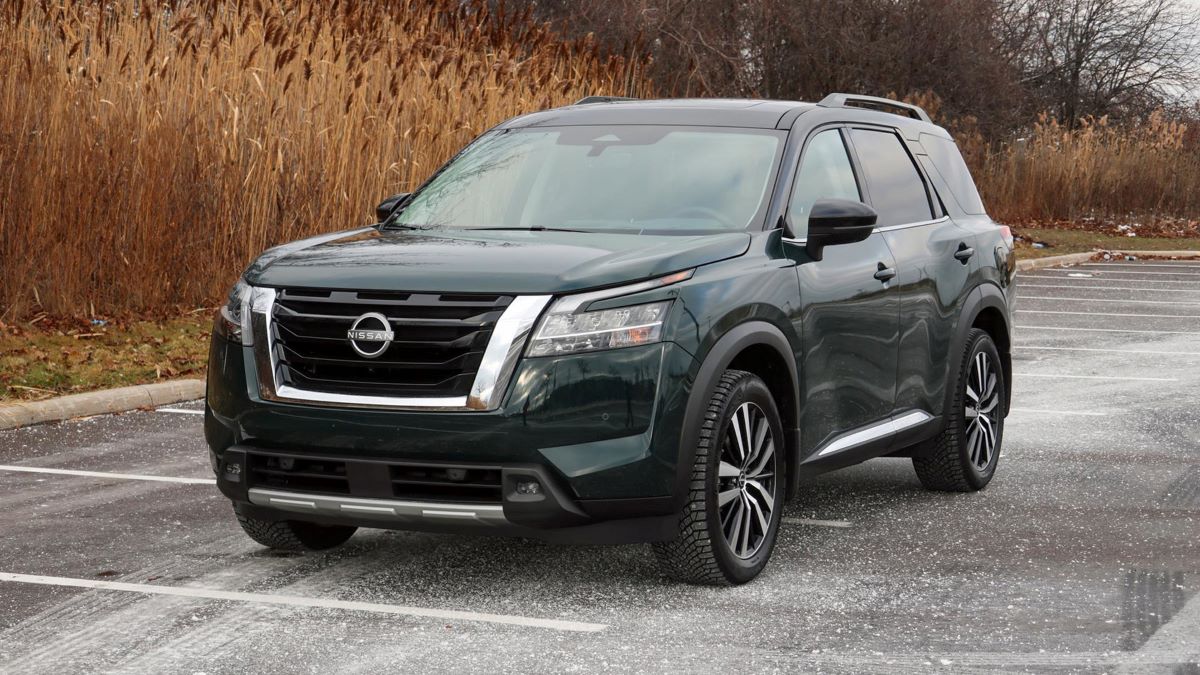
2. Nissan Pathfinder
The Nissan Pathfinder is a midsize SUV that has undergone several redesigns over the years, but it continues to struggle with visibility issues. The A-pillars of the Pathfinder are thick and positioned in a way that creates significant blind spots, making it challenging to see pedestrians, cyclists, or other vehicles when changing lanes or making turns.
These bulky A-pillars obstruct the driver’s view, especially when driving through busy intersections or merging onto highways. This limited visibility can lead to dangerous situations, particularly when trying to make quick decisions or navigate through tight spaces where immediate reaction is needed.
While the Pathfinder is designed for family comfort and offers a spacious interior, the obstructed sightlines compromise the driving experience and make it harder for the driver to feel fully aware of their environment.
The side windows in the Pathfinder are large, but are not enough to fully offset the visibility issues caused by the thick A-pillars. These large windows do help reduce the feeling of being enclosed, but they still create substantial blind spots, particularly on the driver’s side.
This makes it difficult to monitor traffic around you and can cause hesitation when switching lanes or making maneuvers. In some driving conditions, such as during heavy rain or snow, these blind spots are exacerbated, making it harder for the driver to gauge how much space they have around them.
Additionally, the side mirrors, though adequately sized, do not fully compensate for the view that is obstructed by the large A-pillars. In terms of visibility, the Nissan Pathfinder falls short, especially for those who rely on clear sightlines to maneuver safely in various driving environments.
The rear visibility in the Pathfinder is also an area of concern. The rear window is relatively small, and when combined with the thick rear pillars, it can feel as though you’re driving blind when reversing or parking.
Parking in tight spots becomes a guessing game, and the limited rearward view makes it harder to park without relying heavily on the rearview camera.
Even with the camera system in place, the size of the rear pillars and the reduced visibility still make backing out of parking spaces or driveways a cumbersome task. The vehicle’s large size does not help either, as maneuvering in tight spaces becomes more challenging when you can’t fully see what’s around you.
For drivers who frequently navigate urban environments or parking garages, the Nissan Pathfinder’s limited visibility can feel like a significant drawback, detracting from what is otherwise a comfortable and capable family SUV.
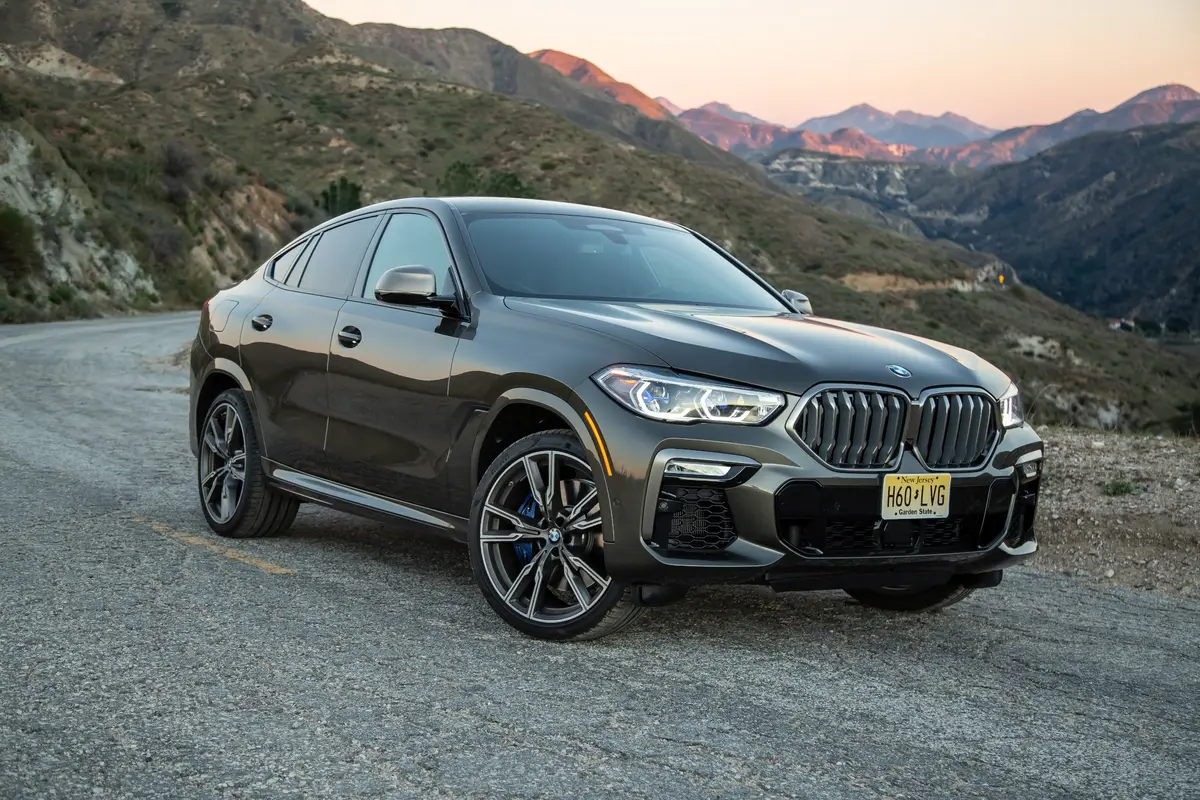
3. BMW X6
The BMW X6 is a luxury SUV that blends sporty performance with an elegant design, but its sleek, coupe-like silhouette sacrifices visibility for style. The sloping roofline and small rear window significantly limit rearward visibility, making it difficult to see what’s behind the vehicle, especially when reversing.
The narrow rear window and the angular design of the rear pillars create blind spots that make parking and reversing more challenging.
For drivers who prioritize visibility, the X6’s design might feel more like a hindrance than an asset. This limitation is particularly noticeable when backing into parking spaces or when trying to reverse out of tight spots where clear sightlines are crucial for safety.
Although the X6 is equipped with parking sensors and a rearview camera, the rearward view is still constricted, making it harder for the driver to gauge the surroundings accurately.
The A-pillars of the X6 are also quite thick, further obstructing the driver’s view when making turns or changing lanes. The wide A-pillars create substantial blind spots, which can make lane changes feel more risky, particularly when driving on highways or in heavy traffic.
The thick pillars, combined with the sloping roofline, result in a design that prioritizes aesthetics over practicality, creating sightline challenges that affect the driving experience.
For those who enjoy a sporty driving style or appreciate the luxury of the BMW brand, these visibility issues might not seem as significant, but they can be concerning for anyone who drives in more congested environments where awareness of surroundings is essential.
The side mirrors on the BMW X6 are well-positioned, but they still cannot entirely mitigate the view obstruction caused by the bulky A-pillars.
The lack of visibility, especially in urban environments or when parking, makes it harder to maneuver confidently, and some drivers might find it frustrating to rely heavily on technology like the rearview camera and blind-spot monitoring.
While these advanced systems can help, they are no replacement for actual sightlines that should ideally be more open and clear. The restricted rear and side visibility in the X6 ultimately makes it less suitable for those who need clear views in all directions, especially when parking in tight spaces or navigating through dense traffic.

4. Range Rover Evoque
The Range Rover Evoque is a compact luxury SUV with a stylish design that features a coupe-like roofline and a compact body. While the Evoque’s aesthetic appeal is undeniable, its design sacrifices visibility in key areas.
The sloping roofline reduces the size of the rear window, limiting rearward visibility and making it difficult to see what’s behind the vehicle when reversing or parking.
The rearward sightline is constricted, and even with the inclusion of a rearview camera, the view behind remains less than ideal. The small rear window and thick rear pillars create blind spots that make parking in tight spaces or backing out of a driveway more difficult.
Although the Evoque is a luxury vehicle with advanced technology, the design compromises make it less practical for those who need clear, unobstructed visibility when navigating in urban environments.
The A-pillars on the Evoque are thick, and this significantly obstructs the driver’s line of sight when making turns or changing lanes. These bulky A-pillars create noticeable blind spots, which can increase the difficulty of merging onto highways or driving through busy intersections.
This lack of clear sightlines can make driving feel less intuitive and more stressful, especially in tight spaces or when quick decisions are required. For those who prioritize visibility in their vehicles, the Evoque’s design may feel like a step backward, as it compromises practical driving needs for a sleek and sporty look.
While the Evoque offers impressive performance and a luxurious interior, its visibility challenges can make it less than ideal for drivers who require an open view of their surroundings.
Despite its attractive exterior, the Range Rover Evoque’s small rear window and thick pillars result in a lack of visibility, particularly when reversing or parking in confined spaces. The rearview camera helps, but it cannot replace the need for clear physical sightlines.
For drivers who frequently park in tight spaces or drive in busy urban environments, the Evoque’s design may feel restrictive and frustrating. This luxury SUV’s limited visibility could be a significant drawback for anyone who values ease of maneuverability and a clear view of their surroundings.
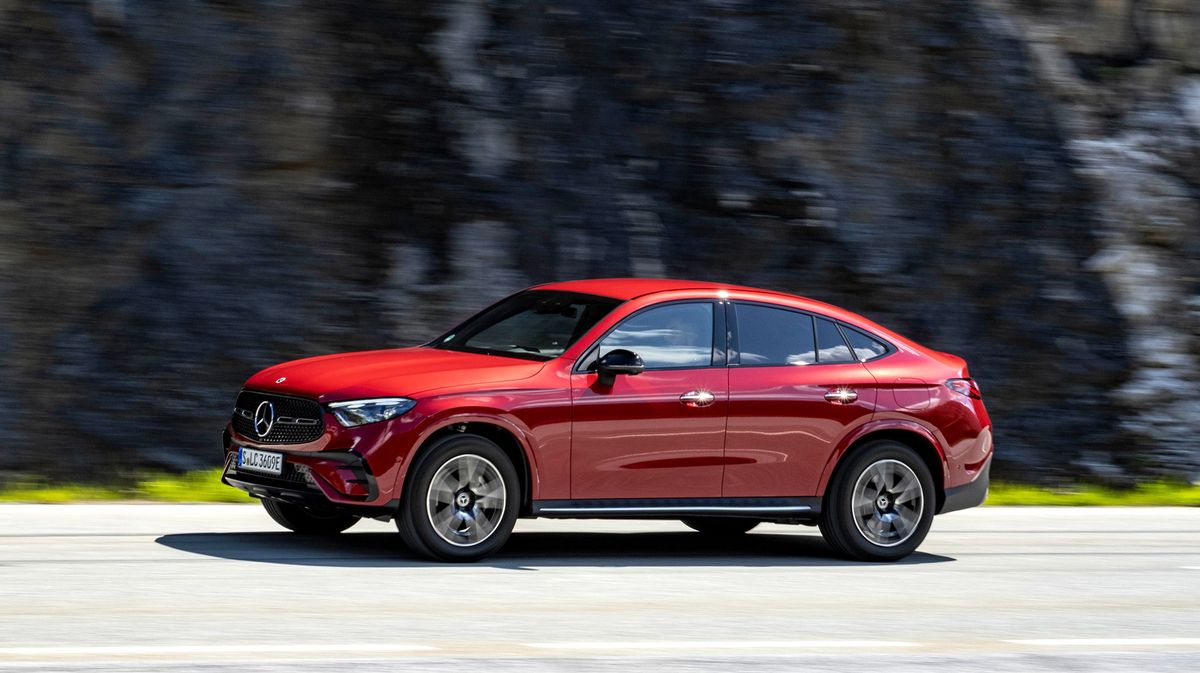
5. Mercedes-Benz GLC Coupe
The Mercedes-Benz GLC Coupe is a luxury SUV that merges the functionality of an SUV with the style of a coupe. However, this design decision comes at a cost in terms of visibility. The sloping roofline and small rear window severely limit rearward visibility, creating a blind spot when reversing or parking.
The reduced size of the rear window, combined with thick rear pillars, makes it difficult to see what’s behind you, especially in tight parking spaces or when backing out of a driveway. For drivers who frequently rely on their rearview when maneuvering, this design can feel frustrating and restrictive.
While the GLC Coupe comes equipped with a rearview camera, the limited physical visibility from the rear window can make parking and reversing more challenging, especially in crowded environments.
The A-pillars of the GLC Coupe are also relatively thick, which contributes to blind spots when turning or changing lanes. The wide A-pillars block the view of other vehicles and pedestrians, which can make navigating tight streets or merging onto highways more difficult.
These sightline issues are especially noticeable when driving in heavy traffic or when making quick lane changes. While the GLC Coupe offers advanced technology like blind-spot monitoring and parking sensors, these features cannot replace the need for clear, unobstructed sightlines that are critical for safe driving. The GLC Coupe’s sleek exterior design may appeal to those looking for style, but it comes at the expense of visibility, making it less practical for drivers who prioritize safety and clarity.
Despite its luxury and performance capabilities, the Mercedes-Benz GLC Coupe’s design limits the driver’s visibility, particularly in urban environments. The small rear window, thick pillars, and sloping roofline all contribute to blind spots that reduce visibility and make it more challenging to park and navigate tight spaces.
For those who need clear sightlines to feel confident on the road, the GLC Coupe may not be the best choice. While its exterior appearance is undeniably attractive, the restricted visibility inside the cabin could be a major downside for anyone who values practicality in their vehicle choice.
Also Read: 10 Best Cars for Families and 5 You Might Regret
Visibility is one of the most underrated yet critical aspects to consider when purchasing an SUV. While many buyers focus on horsepower, infotainment, or even third-row seating, the ability to see out of your vehicle impacts your safety every moment you’re behind the wheel.
Whether you’re navigating a crowded urban intersection, reversing out of a narrow driveway, or cruising down a highway, good visibility plays a pivotal role in preventing accidents, reducing driver fatigue, and improving situational awareness. It can mean the difference between confidently maneuvering through traffic and second-guessing every lane change or turn.
While modern driver-assistance features like blind-spot monitoring and surround-view cameras offer some mitigation, they are ultimately no substitute for the peace of mind that comes from having a wide, unobstructed view in every direction.
The contrast between the SUVs featured in this article underscores just how differently manufacturers approach visibility. On one side, you have vehicles like the Subaru Outback, Honda CR-V, and Toyota Highlander, which are thoughtfully designed to offer large windows, slender pillars, and commanding seating positions that enhance natural sightlines.
These vehicles prioritize function over flashy form, making them ideal for families, urban commuters, or anyone who values comfort and confidence on the road.
The enhanced visibility they offer not only contributes to a safer drive but also creates a more relaxed, enjoyable experience, especially during longer trips or in congested traffic. Their high marks in visibility are no coincidence—they reflect a design philosophy centered around the driver and real-world usability.
On the flip side, some SUVs prioritize bold design cues and aggressive styling, often at the expense of visibility. Models like the BMW X6, Mercedes-Benz GLC Coupe, and Range Rover Evoque may boast stunning profiles and luxury appeal, but their sleek rooflines, small rear windows, and thick pillars result in restricted sightlines that can make daily driving feel more taxing.
While these vehicles certainly deliver on aesthetics, performance, and brand prestige, they may not be the best fit for drivers who frequently navigate tight parking garages, suburban traffic, or who simply want to feel more connected to their surroundings.
It’s also important to note that relying too heavily on cameras and sensors can lull drivers into complacency—these aids should complement, not replace, a clear view out of the vehicle.
Ultimately, choosing an SUV is about finding the right balance for your lifestyle. If visibility is high on your list of priorities—as it should be—then it pays to test drive with this in mind. Sit in the driver’s seat and assess the front, side, and rear views. Look over your shoulder, check the blind spots, and try a few parking maneuvers.
Don’t be swayed solely by brand or style; instead, consider how the vehicle will serve you every day, especially when road conditions are less than ideal.
A beautiful SUV that makes you feel boxed in may quickly become frustrating, whereas a more practical, visibility-focused model can enhance your driving confidence every mile. In the long run, a vehicle that helps you see helps you drive safely, and that’s always worth prioritizing.

